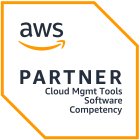What is It For?
Kubeflow is primarily used for building and managing machine learning workflows. Key use cases include:
- End-to-End ML Pipelines: Automates data preparation, model training, validation, and deployment.
- Experiment Tracking: Enables tracking and comparison of different model versions and hyperparameters.
- Distributed Training: Supports distributed training of ML models using frameworks like TensorFlow and PyTorch.
- Serving Models: Facilitates scalable and efficient model deployment.
- Resource Management: Uses Kubernetes’ capabilities to allocate resources dynamically for ML tasks.
- Collaboration: Provides a unified interface for data scientists, engineers, and DevOps teams.
How Much Does it Cost?
Kubeflow itself is free and open-source. However, running Kubeflow incurs costs associated with:
- Kubernetes Infrastructure: Costs depend on the underlying cloud provider or on-premises setup.
- Storage and Compute: Expenses for storage, compute nodes, GPUs, and other resources used for ML tasks.
- Operational Overheads: Time and resources needed to set up, maintain, and manage the platform.
Ownership
Kubeflow originated as a Google-led project, but it has evolved into a community-driven open-source platform under the governance of the Cloud Native Computing Foundation (CNCF). Google continues to contribute actively but does not “own” Kubeflow.
Why Not to Use Kubeflow?
While Kubeflow is powerful, it might not suit all needs:
- Complexity: Requires knowledge of Kubernetes and significant setup time.
- Overhead: Can be resource-intensive for small-scale projects.
- Steep Learning Curve: Non-trivial to learn and configure for teams new to Kubernetes.
- Limited Integration: May not integrate seamlessly with non-Kubernetes environments or legacy systems.
Which is Better: MLflow or Kubeflow?
The choice depends on your use case:
- MLflow: Focuses on experiment tracking, model management, and reproducibility. Easier to set up and use for lightweight needs.
- Kubeflow: Offers end-to-end ML pipeline management with deep integration into Kubernetes. Ideal for large-scale, distributed ML workflows.
Recommendation: Use MLflow for simpler workflows and Kubeflow for complex, Kubernetes-based ML systems.
Can I Run Kubeflow Locally?
Yes, Kubeflow can be run locally using tools like minikube or kind (Kubernetes in Docker). However, running Kubeflow locally has limitations:
- Resource Constraints: Local environments may lack the resources needed for large-scale ML tasks.
- Testing Only: Best suited for development and testing rather than production use.
Who Uses Kubeflow?
Organizations that leverage Kubernetes for machine learning often use Kubeflow. This includes:
- Tech Companies: For building scalable AI and ML models.
- Research Institutions: To manage and automate ML experiments.
- Enterprises: For deploying ML workflows in production.
Alternatives to Kubeflow:
- MLflow: Focused on model lifecycle management and experiment tracking.
- Airflow: Best for orchestrating complex workflows, including ML pipelines.
- TensorFlow Extended (TFX): Optimized for TensorFlow-based ML pipelines.
- Metaflow: Simplifies ML pipeline development and execution.
- SageMaker: Managed ML service by AWS, offering similar capabilities without Kubernetes.
Better Alternatives:
- MLflow is better for lightweight needs and non-Kubernetes setups.
- Airflow excels in orchestrating diverse workflows but lacks deep ML-specific features.
- SageMaker is ideal for users deeply integrated with AWS services.



